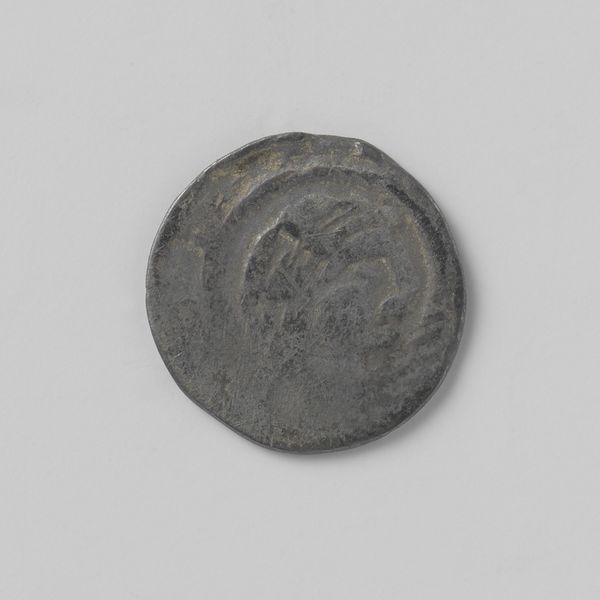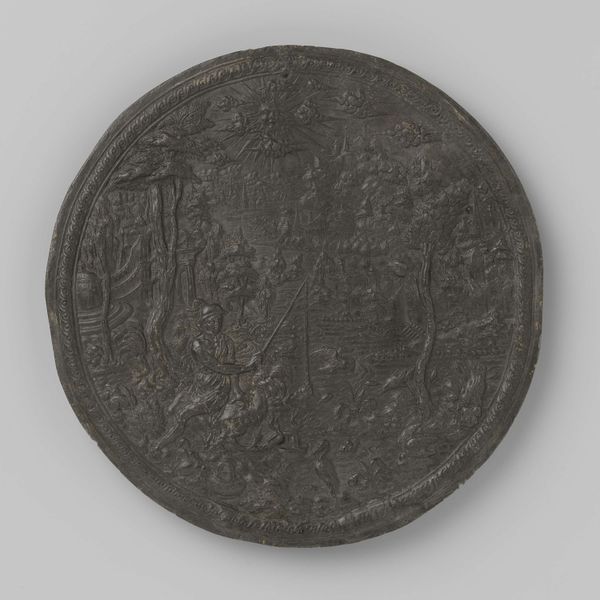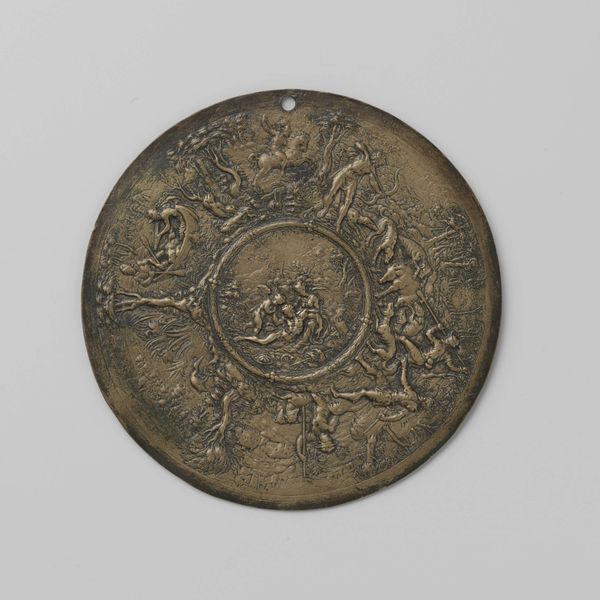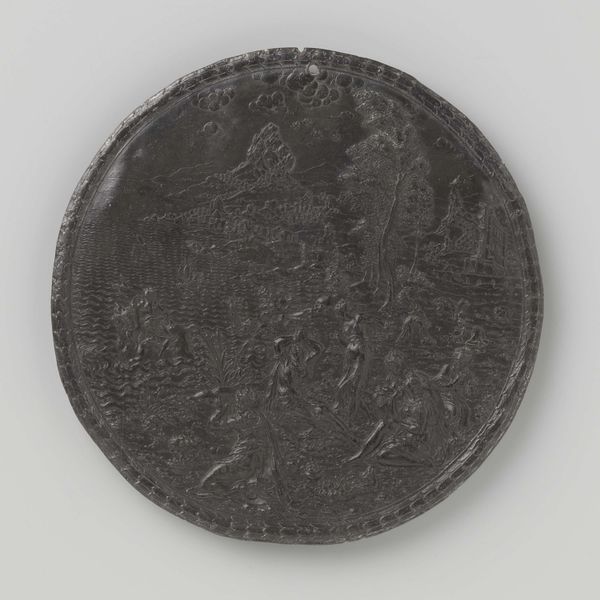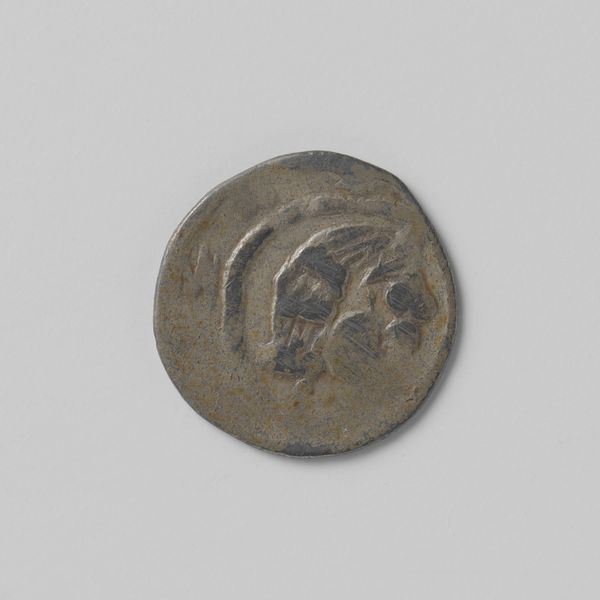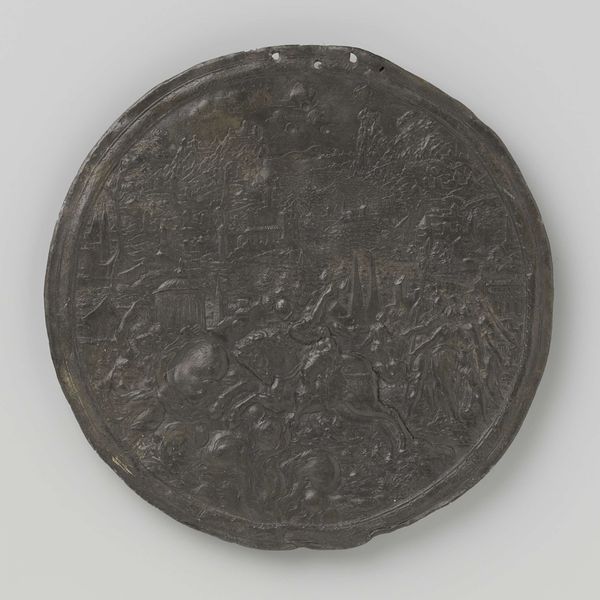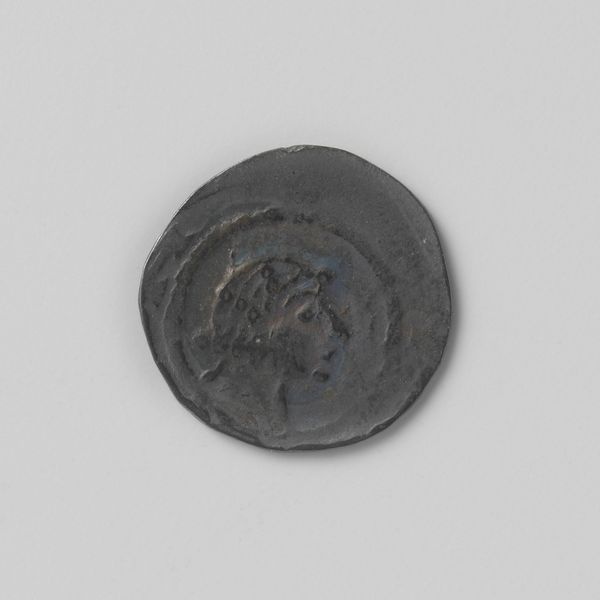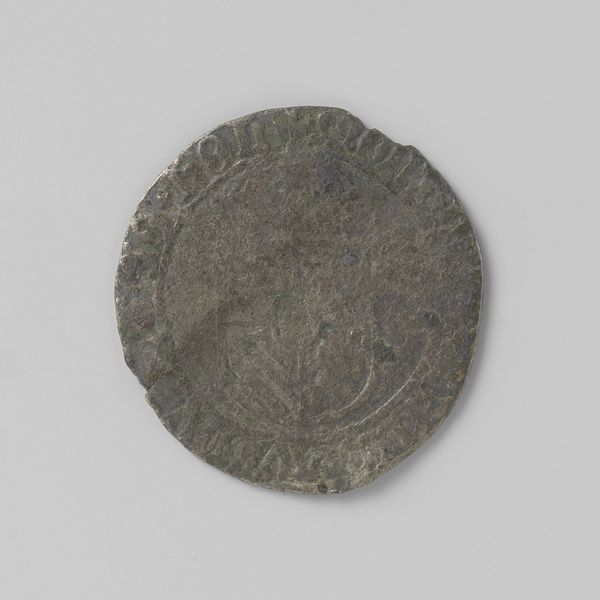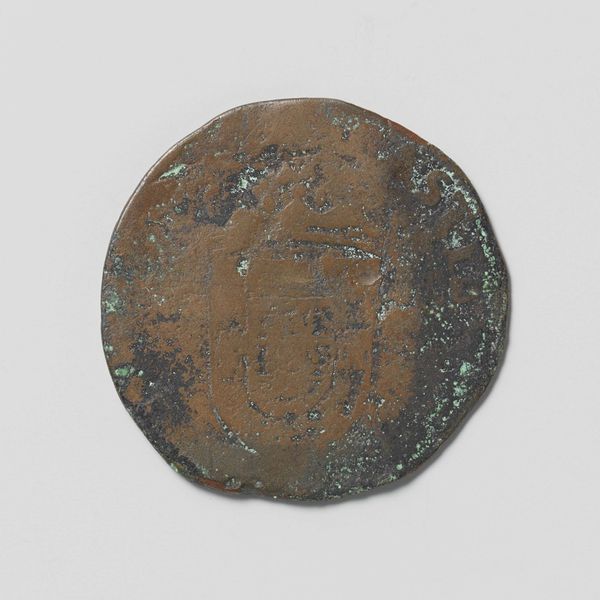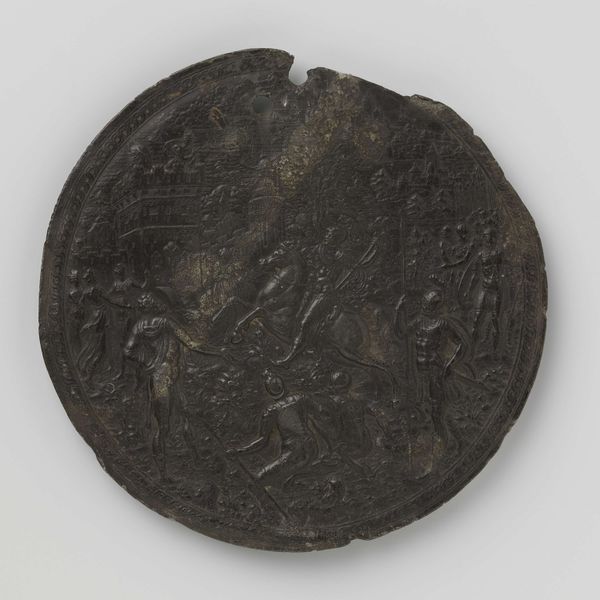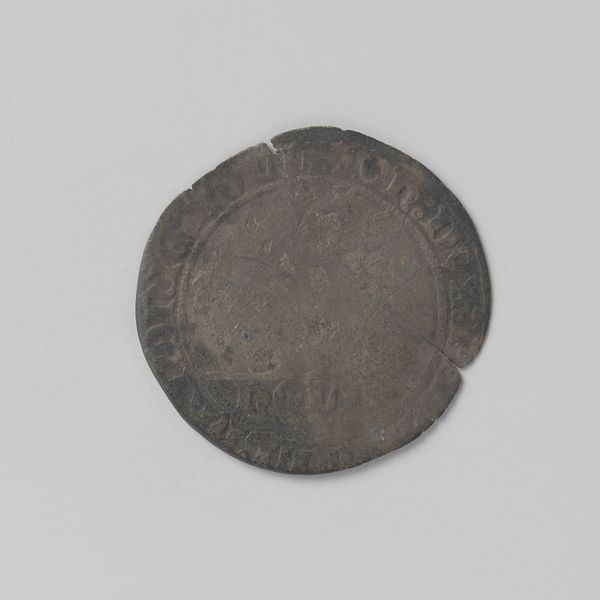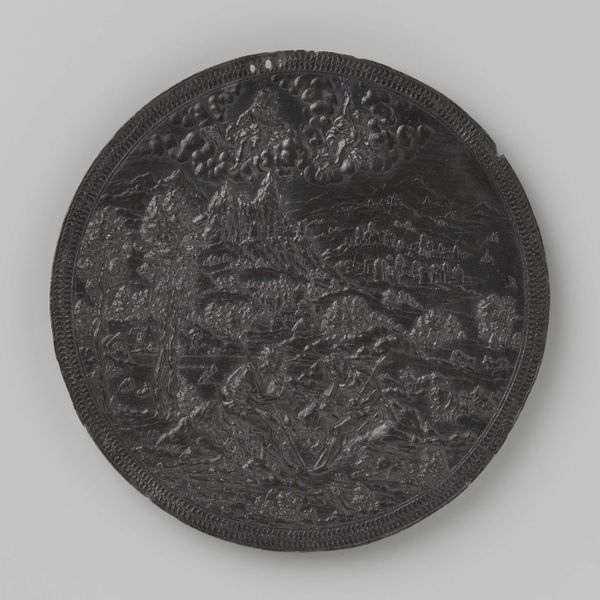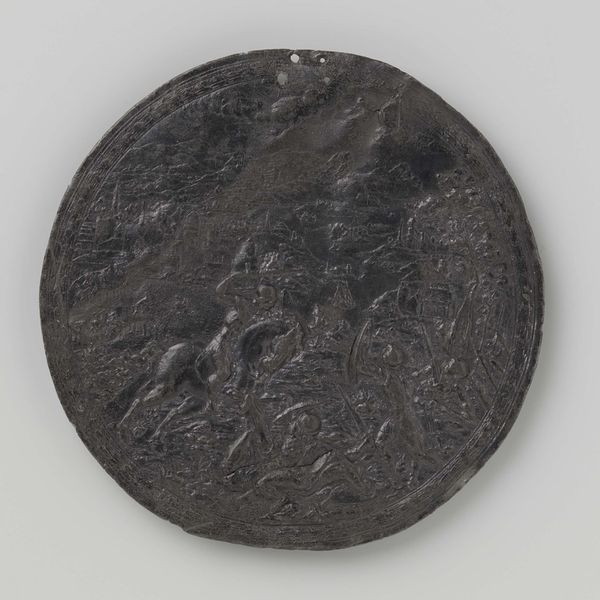
metal, relief, sculpture
#
metal
#
relief
#
mannerism
#
figuration
#
sculpture
#
mythology
#
history-painting
Dimensions: diameter 14.5 cm, height 04 mm, weight 196 gr
Copyright: Rijks Museum: Open Domain
Curator: Here we have "Quos Ego," a metal relief sculpture dating back to around 1600, attributed to Willem Danielsz van Tetrode, and it's part of the Rijksmuseum's collection. Editor: Whoa, it feels like plunging into chaos! Bodies everywhere, churning water... very dramatic, like a storm unfolding right before my eyes. There's this silver-grey light that just makes the whole scene even more intense. Curator: Indeed. The artist employs a Mannerist style, evident in the exaggerated musculature and dynamic composition. The piece likely depicts a scene from classical mythology, possibly Neptune calming the sea. Semiotic analysis would suggest the swirling figures represent turbulent emotions and forces. Editor: Right, because the muscular figure in the center definitely exudes control, like he's literally holding the storm back with his will. Makes me think about the raw power we all carry within. Makes one wonder about Tetrode himself. Was he riding out some personal tempests when he shaped this? Curator: That's a compelling interpretation. Technically, observe the incredible depth achieved in the relief, despite the constraints of the medium. The play of light across the metal surface adds to the sense of movement and drama, doesn't it? Van Tetrode’s use of metal inherently communicates resilience, endurance – like the very narratives that persisted through ancient times. Editor: It’s all these frantic little bodies – everyone tossed about—that snag my attention. They lend a touch of both fear and sublimity. Looking at them, I almost feel the sea spray and the wind's bite. A fascinating exploration of chaos and command, and perhaps a little too on the nose for today... Curator: It is an assertive piece, yes. I find that in its historical context and refined execution, "Quos Ego" serves as a potent demonstration of Mannerist sculpture and its fascination with representing dynamic, often emotionally charged narratives. Editor: Agreed. I'll certainly remember that chaotic grace and those silver bodies forever swirling.
Comments
No comments
Be the first to comment and join the conversation on the ultimate creative platform.
